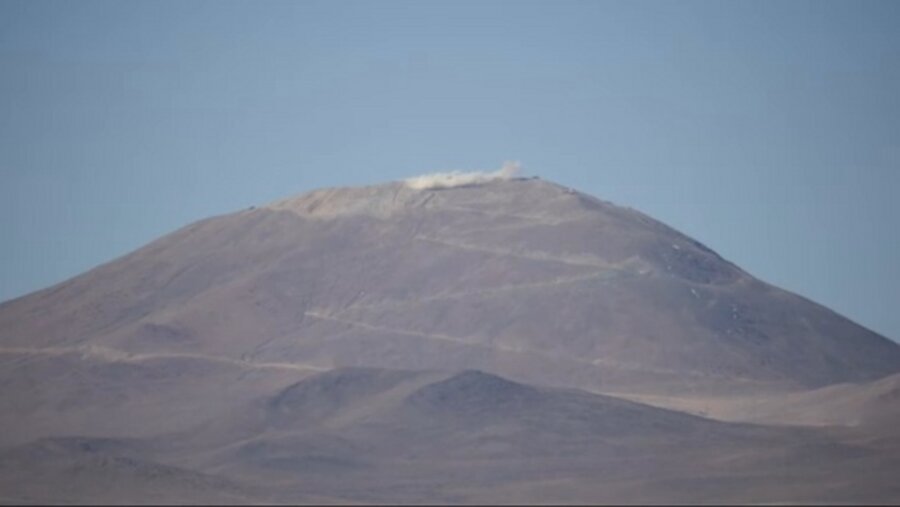Construction of world's biggest optical telescope starts with a bang
Loading...
Explosives were detonated at the top of a mountain in northern Chile today (June 19) to begin clearing the way for the biggest optical telescope in the world.
The tiny blast took place around 1:40 p.m. local time (1740 GMT) in the remote, clear-skied Atacama Desert. Largely ceremonial, the explosion marked a milestone in the construction of the European Extremely Large Telescope, or E-ELT, the latest project of the European Southern Observatory (ESO).
Workers will eventually knock 59 feet (18 meters) from the peak of the sandy-colored Cerro Armazones, creating a flat surface to support the 2,700-ton (2,449 metric tons) telescope building and construction equipment. [See Photos of the E-ELT Site on Cerro Armazones]
The E-ELT's mirror, made up of 798 segments, will stretch 128 feet (39 m) in diameter and will be surrounded by a dome about half the size of a football stadium. At such a huge size, the telescope will be able to collect 100 million times more light than the human eye and at least 15 times more light than today's most powerful optical telescopes, ESO officials said.
For comparison, the biggest ground-based optical telescope on Earth today is the 34-foot (10.4 m) telescope located on La Palma of Spain's Canary Islands, which saw its "first light" in 2009. The two 33-foot (10 m) telescopes at the W. M. Keck Observatory, which became operational in the 1990s, represent the second-largest optical telescopes in the world, located near the summit of Mauna Kea in Hawaii.
ESO's member states include 14 European nations and Brazil. The organization began planning for the E-ELT nearly a decade ago, and the plans for the telescope were approved in 2012.
"I've been working on this project since 2006, and I'm extremely pleased that we're really moving some dirt now," E-ELT scientist Joe Liske told Live Science ahead of Thursday's event.
ESO officials hope astronomers will make their first observations using E-ELT in the early 2020s. The telescope promises to give scientists an unprecedented view into the expansion of the universe, the formation of the first galaxies, the mysterious stuff known as dark matter and alien planets that could be potentially hospitable to life.
Cerro Armazones is just 12 miles (20 kilometers) from ESO's Paranal Observatory, which houses a network of telescopes including the Very Large Telescope, composed of four separate 27-foot (8.2 m) telescopes.
Follow Megan Gannon on Twitter and Google+. Follow us @livescience, Facebook & Google+. Original article on Live Science.
- 6 Stellar Places for Skywatching in the US
- Spaced Out! 101 Astronomy Images That Will Blow Your Mind
- What a View: Amazing Astronaut Images of Earth
Copyright 2014 LiveScience, a TechMediaNetwork company. All rights reserved. This material may not be published, broadcast, rewritten or redistributed.







